Asia Travel Pulse
Asia-Pacific Business Travel and Events: New Stability Predicted Through 2026
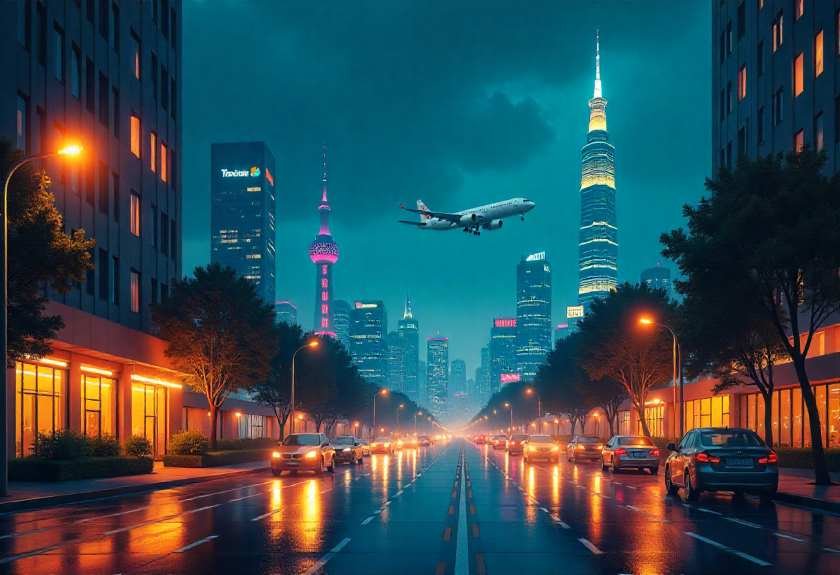
Wednesday, July 23, 2025
After significant disruptions caused by the global pandemic, recent forecasts suggest that Asia-Pacific business travel and event costs are finally entering a more stable period. The latest 2026 Global Business Travel Forecast, jointly released by CWT and the Global Business Travel Association (GBTA), indicates minimal expected fluctuations in air travel costs, hotel accommodation rates, ground transportation expenses, and meeting costs over the next year and a half.
Airfare Costs: Asia-Pacific Remains Cost-Effective
The Asia-Pacific region continues to offer competitive airfare pricing compared to other global regions. The average business airfare in APAC increased slightly by 2.9% in 2024 to reach around $502. However, forecasts show a mild reduction of approximately 1.8% in 2025, followed by a slight increase of 0.8% in 2026. This moderation is primarily attributed to airlines gradually restoring capacity following COVID-related disruptions, although the aviation industry still faces ongoing supply chain issues affecting aircraft availability.
Hotel Rates Gradually Rising
Hotel costs within the region have experienced a steady upward trend. Prices are anticipated to increase by about 4.5% in 2024, averaging $138 per night. Projections indicate further growth of approximately 3.6% in 2025 and around 2.8% in 2026. Rising labor and building expenses, particularly in key metropolitan business hubs, significantly contribute to these incremental rate hikes. Additionally, elevated borrowing costs have slowed new hotel construction, further limiting available supply.
Ground Transport Costs Normalizing
Ground transportation prices, notably car rental rates in the Asia-Pacific region, witnessed a notable rise of 6.3% in 2024, reaching approximately $54.30 per day. However, these costs are anticipated to stabilize with more moderate increases projected at 1.8% in 2025 and 1.3% in 2026. This moderation is largely driven by improved vehicle availability and better fleet management, alleviating previous pressures on corporate travel budgets.
Transforming the Meetings and Events Industry
A significant shift is emerging within the Asia-Pacific events sector. Costs per attendee increased by around 4.5% in 2024, and forecasts suggest further rises of approximately 3.7% in 2025 and 2.4% in 2026.
The industry is increasingly focusing on smaller, strategically designed events that prioritize high-quality experiences. Companies are seeking meaningful, curated events to enhance attendee engagement and achieve better returns on investment.
Evolving Trends and Pressures
The demand for sustainability, wellness initiatives, and hybrid event capabilities continues to grow. Concurrently, premium venue availability remains limited, driving organizers to explore secondary cities, which offer more competitive venue pricing and hotel options. These shifts are reshaping the traditional corporate event landscape.
Strategic Approaches for Corporate Buyers
Patrick Andersen, CEO of CWT, highlights the emerging opportunities for businesses as price stability returns. Andersen emphasizes the importance of strategic negotiations, leveraging localized pricing, and reevaluating traditional event formats to maximize the impact of travel budgets.
Suzanne Neufang, GBTA’s CEO, underscores the continuing role of broader economic influences such as inflation and supply constraints, which shape travel industry dynamics. Neufang advocates for an informed, adaptable approach that aligns closely with overall corporate objectives.
Preparedness Amidst Economic Uncertainty
While economic uncertainties persist globally, CWT and GBTA also present an alternative scenario of global economic downturn. In this hypothetical recessionary scenario, the forecast predicts lower prices across all categories, providing corporate planners with crucial strategic insights for budgetary planning.
Outlook for Corporate Travel Spending
Complementing this forecast, GBTA’s Business Travel Index predicts ongoing strong corporate travel spending within the Asia-Pacific region. Despite geopolitical uncertainty tempering some growth expectations, businesses remain proactive, leveraging improved data and clearer trends for confident decision-making and strategic planning.
Overall, the Asia-Pacific business travel and events landscape is moving towards a period of enhanced stability, presenting corporate travel managers and event organizers with strategic opportunities to optimize their investments and navigate the challenges ahead effectively.
Asia Travel Pulse
Vietnam Rises in Global Passport Index, Now Offering Fifty One Visa-Free Travel Options
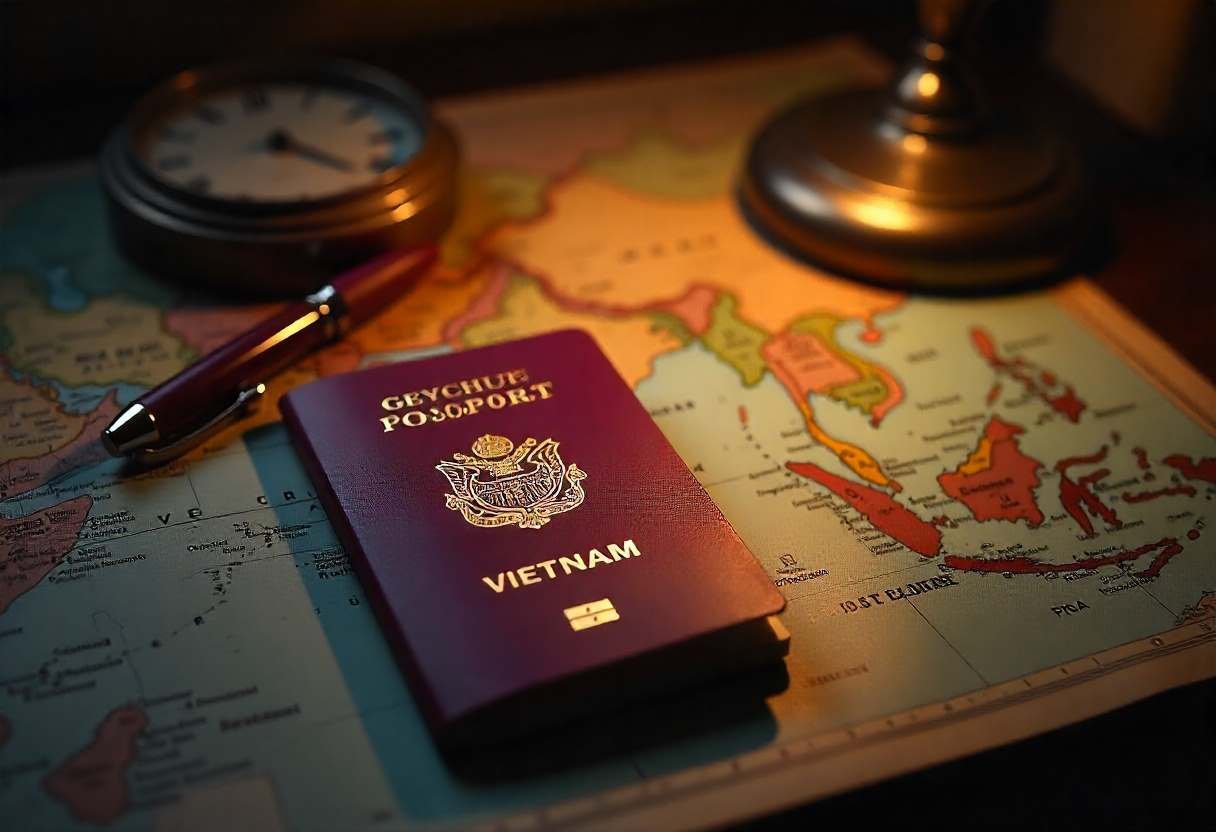
Sunday, July 27, 2025
Vietnamese passport holders now enjoy significantly greater global travel freedom, with the country ranking 84th in the latest Henley Passport Index and gaining access to 51 destinations without a traditional visa. This elevation reflects Vietnam’s growing diplomatic integration and efforts to streamline passport systems.
For students heading abroad, families planning holidays, businesspeople attending overseas conferences, and workers seeking opportunities, this news opens doors and simplifies travel planning in ways that matter personally.
Government Confirmation & Index Methodology
Vietnam’s leap from 91st to 84th place in the Henley Passport Index was publicly endorsed by the Vietnam Government Portal (VGP). Official statements confirm that Vietnamese citizens can now enter 51 out of 227 destinations visa-free or with e‑Visa, electronic travel authorization, or visa-on-arrival arrangements.
The Henley Passport Index, published quarterly, tracks global mobility using exclusive data from the International Air Transport Association (IATA). It rates passports based on travel freedom, measuring access to destinations without needing a visa in advance.
What This Improvement Means for Citizens
Vietnam’s improved ranking is the result of active diplomacy, upgraded biometric passports issued since 2023, and enhanced trust from foreign governments. These elements opened new unilateral visa arrangements and strengthened international confidence in Vietnamese travelers.
For individuals, this means fewer visa interviews or embassy visits and simplified routes to studying, working, or touring abroad. As outbound travel surged—over 4 million Vietnamese travelers in the first half of 2025 (up nearly 54% year-on-year)—faster entry procedures support mobility and align with rising demand.
Visa-Free Destinations: Regional and Global Access
Vietnamese passport holders can travel to a broad range of countries without prior visa arrangements, including:
- ASEAN nations: Thailand, Indonesia, Malaysia, Singapore, the Philippines, Laos, Cambodia, Myanmar
- Central & South Asia, Middle East: Kyrgyzstan, Kazakhstan, Tajikistan, Iran, Maldives
- Africa & Latin America: Kenya, Madagascar, Panama, others under electronic or arrival visas.
This list also includes destinations offering easy e‑Visa, ETA, or VOA access, allowing more seamless entry and strengthening regional links.
How Diplomacy, Tech & Reputation Drove the Rise
Vietnam’s foreign ministry and travel experts cite a combination of factors: upgraded biometric e-passports, discreet but effective diplomatic engagement with several countries, and positive global image of Vietnamese travelers as courteous and law‑abiding visitors.
These elements motivated bilateral agreements that eliminated pre-departure visa requirements, facilitating access across a diverse set of countries.
Real Citizens Benefiting from Easier Travel
For Nguyen Anh—a university student in Ho Chi Minh City—the new visa-free access to ASEAN and Central Asian countries made possible an internship in Kuala Lumpur, without embassy delays. “It cut through red tape and cost, making my trip feasible,” she says.
For family vacationers or first-time travelers in provinces like Da Nang or Hanoi, streamlined access brings peace of mind, lower costs, and the ability to plan in just days rather than weeks.
Travel Boom Accompanies Passport Uplift
Vietnam’s outbound travel volumes increased nearly 54% in the first six months of 2025 compared to the same period in 2024, reaching over 4 million travelers. This surge reflects pent-up demand and the attractiveness of simplified international mobility.
Tourism operators and educational institutions report stronger inquiries from Vietnamese citizens planning trips to countries now visa-free or offering arrival-based visas.
Looking Forward: Strategy to Further Boost Mobility
Vietnam plans to pursue visa-free or visa‑on-arrival access with additional countries, expand diplomatic agreements—especially in Europe and South Asia—and enhance digital infrastructure for passport issuance and travel information.
Officials also emphasize responsible travel and adherence to regulations, reinforcing Vietnam’s positive standing abroad as it pursues higher global ranking in future Henley editions.
Human Perspective & Broader Integration
This mobility boost is more than administrative—it connects families, enables educational exchanges, business collaboration, cultural dialogue, and deeper integration into global society. The passport no longer just documents identity; it represents access and inclusion.
Conclusion
In simple terms: Vietnam’s passport now ranks 84th in the world, offering visa-free or simplified entry to 51 destinations. This leap reflects strategic diplomacy, modern passport infrastructure, and rising global confidence in Vietnamese travel. It marks an important milestone in Vietnam’s integration into the world community—and brings real benefits to students, tourists, professionals, and families seeking global connection.
Asia Travel Pulse
a calming urban stay with only-in-Japan design
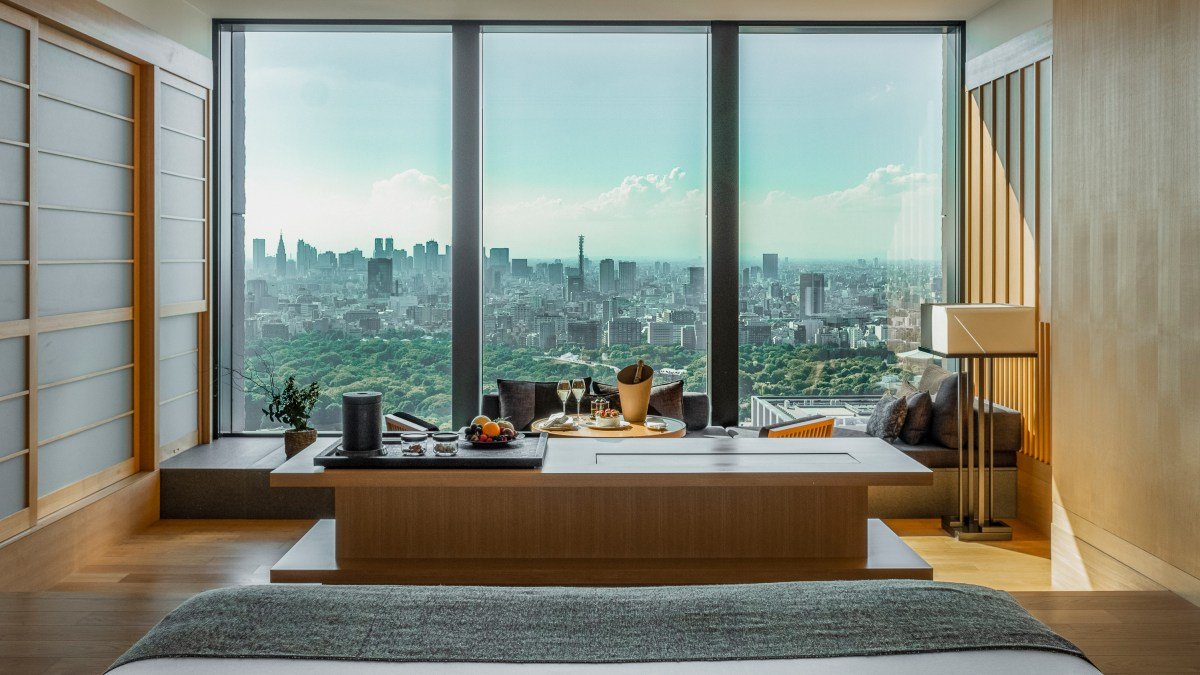
As you step out of the lift into the 33rd-floor lobby of Aman Tokyo, you’re met with a statement of design intent: a soaring 30m-high ceiling like a traditional Japanese lantern, with layers of washi paper stretched over a shoji wooden frame. In a city this crowded it’s a bold move to set aside so much space purely for the purpose of a calming, airy reception, but that’s what Aman is all about. Although the brand’s hotels are usually in rural locations, it’s ensured that its signature vibe of relaxed luxury underpins this city example too, incorporating traditional Japanese elements like ikebana (flower arranging) and karesansui (dry landscape gardens). There are also works by Japanese artists dotted throughout the hotel, including several by the innovative plaster artist Syuhei Hasado. Between its understated design, top-notch spa and attentive service, Aman Tokyo is a place of calm in this brilliant, buzzing and often overstimulating metropolis.
Overall score 9/10
This article contains affiliate links that will earn us revenue
Rooms and suites
Score 9/10
All 84 rooms are suites. Even the smallest measure a generous 71 sq m, with views of the Imperial Palace grounds — and, on clear days, Mount Fuji. Their minimalist but warm design blends modern comforts with the aesthetics of traditional Japanese homes. You’ll find low beds and sliding doors in each suite, alongside a TV that disappears into a cabinet at the touch of a button and bedside panels that control temperature, lighting and blinds. Decor uses traditional materials such as cypress and camphor wood, washi paper and stone alongside art such as flowing black-ink calligraphy.
There are always two wardrobes (with yukatas — cotton kimonos — to wear in bed or to the spa) and two sinks. A deep window-side soaking tub lets you watch the city lights while you bathe, and there’s a separate shower with a cypress stool. The Aman-branded amenities are high quality and you can get a skincare sample kit, including toner, serum and other items, for an additional fee.
Food and drink
Score 8/10
At the Arva restaurant pared-back design draws your attention to floor-to-ceiling windows and an 8m-tall wine cellar. The chef combines Italian techniques with Japanese ingredients in dishes such as roasted Ibaraki Kasumi duck with turnip, kumquat and timur pepper. Lunch and dinner set menus are available, plus evening à la carte, and delicious breakfasts are served here or in your room. Elsewhere, the Lounge offers all-day dining — its three-tiered afternoon teas are popular — but comes into its own after dark, with a sparkling city view. Try the wagyu burger or hitsumabushi (eel three ways) accompanied by a signature yuzu martini. Musashi serves exquisite Edomae sushi; the chef grows his own rice, prepares his own saké and even hand-makes the crockery. Meals are served in omakase (chef’s choice) style at a simple cypress-wood counter. On the ground floor, the Café serves inventive lunches, sweets, hot drinks and evening meals against the backdrop of Otemachi Forest; for more cakes and pastries head to La Pâtisserie.
• Discover our full guide to Japan
• More of the best hotels in Tokyo
What else is there?
Score 9/10
Decorated in the chic, dark tones of the rest of the hotel, Aman Tokyo’s impressive spa spans 2,500 sq m across two floors. Whether you opt for a signature or seasonal treatment, it’s guaranteed to be personalised, unhurried and restorative. You’re encouraged to arrive an hour early for a relaxing misogi (traditional water cleansing) experience in Japanese-style baths and steam rooms. On the same floor is a stunning 30m pool with recessed loungers and floor-to-ceiling windows on two sides. Unusually for Japanese hotels, tattoos don’t need to be covered here (nor in the baths). As with the spa and pool, the 24-hour gym elevates what could be a standard hotel facility — beside free weights, TRX bands and machines, you have access to personal training (for an additional fee) and classes. Yoga and Pilates are among the complimentary activities on offer, which might also include saké tasting or meditation. Other cultural experiences (costing extra) include Sumida River cruises, iaido (swordsmanship) lessons and visits to a training stable for sumo wrestlers.
Where is it?
Score 8/10
Aman Tokyo takes up the top six floors of Otemachi Tower, in the Otemachi business district between Tokyo Station and the Imperial Palace. This puts it within walking distance of the excellent food and shopping around the station, plus Nihonbashi’s izakayas (traditional pubs) and department stores. The northern section of the palace gardens also contains cultural facilities like the National Museum of Modern Art and the National Museum of the Imperial Collections. Of course, proximity to Tokyo Station means easy access to the rest of the city, the airports and the rest of Japan via bullet train.
Price B&B doubles from £1,401
Restaurant mains from £19
Family-friendly Y
Accessible N
Rebecca Hallett was a guest of Aman Tokyo (aman.com)
• Best things to do in Tokyo
• Tokyo v Osaka: which is better?
Asia Travel Pulse
America, Asia, Europe, Middle East, and Africa Drive the Future of Travel with Augmented Reality Technologies Projected to Boost the Market to 29.58 Billion by 2025
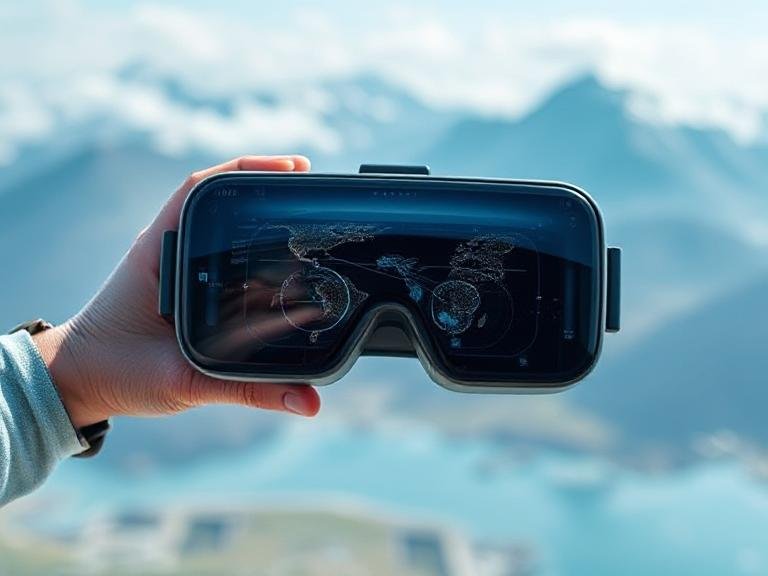
Saturday, July 26, 2025
Augmented Reality (AR) has been one of the most exciting technologies in the travel and tourism space in recent years. As AR can augment and enable the travel experience, it has been transforming the way tourists interact with destinations, services, and booking services. This market has already been growing rapidly, that growth will now just accelerate even faster in the future. The case for AR in travel This demand for AR comes from quite a few directions, including immersive travel experiences, imaginative solutions for navigation, cultural storytelling, connecting with your customers and more.
Projected Market Growth for Augmented Reality in Travel and Tourism by 2025
The augmented reality market within the travel and tourism sector has witnessed impressive expansion, and its outlook for the coming years is even more optimistic. By 2024, the market is anticipated to generate \$21.44 billion in revenue, with a forecasted rise to \$29.58 billion by 2025. This growth equates to a significant compound annual growth rate (CAGR) of 38.0%. The surge in market size is largely attributed to the improvement in user experiences, the support of local businesses, and the increasing integration of social media, which encourages travel and tourism promotion. Positive user reviews and the growing interest in experiential travel are also contributing factors to the market’s expansion.
Augmented Reality Market Outlook for 2029
Looking ahead to 2029, the market for augmented reality in travel and tourism is set to grow exponentially. With an anticipated market value of $109.13 billion, the industry will experience a CAGR of 38.6% over the next five years. The increase in market demand can be attributed to a range of applications in key tourism segments such as travel booking, educational tourism, nature-based adventures, and the sharing of user-generated content. As travelers become increasingly connected to digital tools, AR will continue to be a central player in enhancing their experiences. Notably, wearable AR devices, wayfinding solutions, contactless interactions, and cultural storytelling are expected to become major trends during the forecast period.
Key Drivers Powering Market Expansion
Several key drivers are contributing to the rapid expansion of the augmented reality market in travel and tourism. The increasing demand for travel—spanning leisure, business ventures, and sports activities—has spurred interest in smart tourism and AR applications. As tourism becomes more personalized, travelers are looking for ways to engage in more interactive and immersive experiences. In 2023, the United Kingdom saw a surge in foreign visitors, with 38 million arrivals, representing a 21.7% increase from the previous year. These travelers contributed $39.4 billion to the UK economy, an increase of $5.84 billion. The adoption of AR technologies in travel is helping to meet these increasing demands by offering tourists a more captivating and informative experience, whether for navigation, entertainment, or cultural exploration.
Trends Disrupting the Augmented Reality in Travel and Tourism Market
A growing number of businesses in the augmented reality sector are collaborating to develop innovative products and services that enhance the travel experience. By leveraging shared resources and expertise, strategic alliances are accelerating the development of new AR applications in travel and tourism. A prime example is the partnership between ARway.ai and AI Safer, announced in January 2023. This collaboration focuses on improving visitor engagement at cultural sites and museums in Saudi Arabia, using AR navigation technology. The aim is to create immersive experiences that help visitors deepen their understanding of the country’s rich cultural heritage, showcasing the growing potential for AR in heritage tourism.
Emerging Segments and Market Expansion
The augmented reality in travel and tourism market is segmented into several key areas, which provide various growth opportunities for both developers and investors:
By Component:
Hardware: AR glasses, mobile devices, and head-mounted displays (HMDs)
Software: AR applications, development tools, and content management systems (CMS)
Services: Consulting, integration, and maintenance services
By Technology:
Augmented Reality (AR) and Virtual Reality (VR)
By Application:
Hospitality
In-flight entertainment
Travel booking services
AR gamification
Navigation solutions
These segments highlight the diverse applications of AR technology, from enhancing travel booking experiences to enriching in-flight entertainment and improving navigation and gamification. As demand grows, additional subsegments such as educational tourism and cultural storytelling will continue to drive growth.
Market Leaders in the Augmented Reality Travel and Tourism Sector
Numerous international companies are at the forefront of driving innovation in the augmented reality travel and tourism sector. These players include technology giants such as Apple Inc., Google LLC, and TeamViewer SE, as well as travel industry leaders like Delta Air Lines, Marriott International, and Booking.com. These companies are shaping the future of travel through their investments in AR technologies, which enhance various aspects of the travel journey. Additionally, travel brands like TUI Group, Airbnb, and Hilton Worldwide are also exploring the potential of AR to deliver superior customer experiences and expand their service offerings.
Regional Market Insights: North America and Asia-Pacific
As of 2024, North America remains the largest regional market for augmented reality in travel and tourism. The adoption of AR technology in the region is expected to continue its strong growth due to widespread interest in enhancing customer engagement and the region’s technological infrastructure. However, Asia-Pacific is poised to become the fastest-growing region in the coming years, driven by increasing tourism in countries such as China, Japan, and India. The Asia-Pacific region is expected to see rapid adoption of AR in tourism due to its large population, growing middle class, and increasing use of mobile devices and wearable technology.
AR in Tourism- A New Era of Innovation
It’s fair to say that the AR travel and tourism market is going through an interesting expansion phase at the moment. With immense expansion expected in the year ahead, the industry is expected to grow to be an essential part of travel. With global tourism on the rise and AR technology picking up steam, the industry should see more personalized, more immersive, and more efficient travel experiences on the horizon. For both tourists and organizations, AR applications that allow users’ easy navigation, inspiring cultural immersion, and customized service will be of great interest. The reality is this, as the technology develops the augmented reality in travel and tourism sector will continue to redefine the challenge for seeing the world, in turning all travel experiences into a more interactive, engaging opportunity than ever before.
Download report here: https://www.thebusinessresearchcompany.com/report/augmented-reality-in-travel-and-tourism-global-market-report
-

 Brand Stories6 days ago
Brand Stories6 days agoBloom Hotels: A Modern Vision of Hospitality Redefining Travel
-

 Brand Stories1 day ago
Brand Stories1 day agoCheQin.ai sets a new standard for hotel booking with its AI capabilities: empowering travellers to bargain, choose the best, and book with clarity.
-

 Destinations & Things To Do1 week ago
Destinations & Things To Do1 week agoUntouched Destinations: Stunning Hidden Gems You Must Visit
-

 AI in Travel1 week ago
AI in Travel1 week agoAI Travel Revolution: Must-Have Guide to the Best Experience
-

 Brand Stories3 weeks ago
Brand Stories3 weeks agoVoice AI Startup ElevenLabs Plans to Add Hubs Around the World
-

 Brand Stories2 weeks ago
Brand Stories2 weeks agoHow Elon Musk’s rogue Grok chatbot became a cautionary AI tale
-

 Destinations & Things To Do1 day ago
Destinations & Things To Do1 day agoThis Hidden Beach in India Glows at Night-But Only in One Secret Season
-

 Asia Travel Pulse3 weeks ago
Asia Travel Pulse3 weeks agoLooking For Adventure In Asia? Here Are 7 Epic Destinations You Need To Experience At Least Once – Zee News
-

 AI in Travel3 weeks ago
AI in Travel3 weeks ago‘Will AI take my job?’ A trip to a Beijing fortune-telling bar to see what lies ahead | China
-

 Brand Stories3 weeks ago
Brand Stories3 weeks agoChatGPT — the last of the great romantics



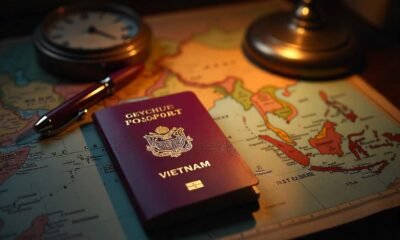

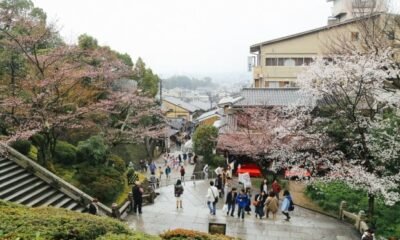







You must be logged in to post a comment Login